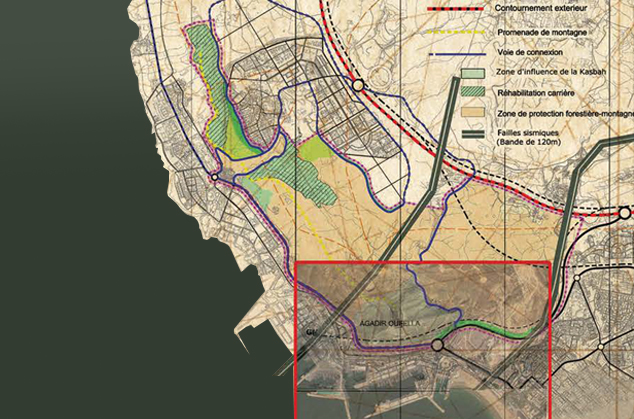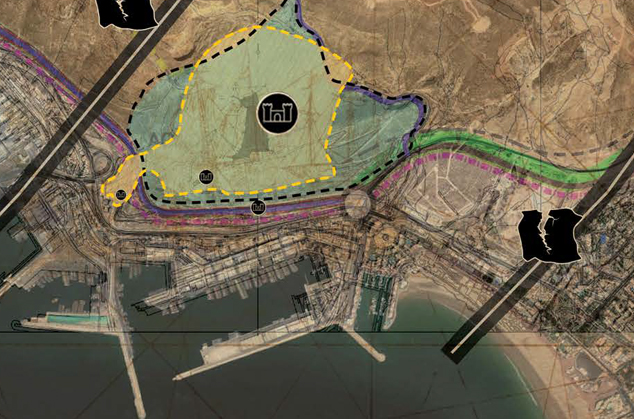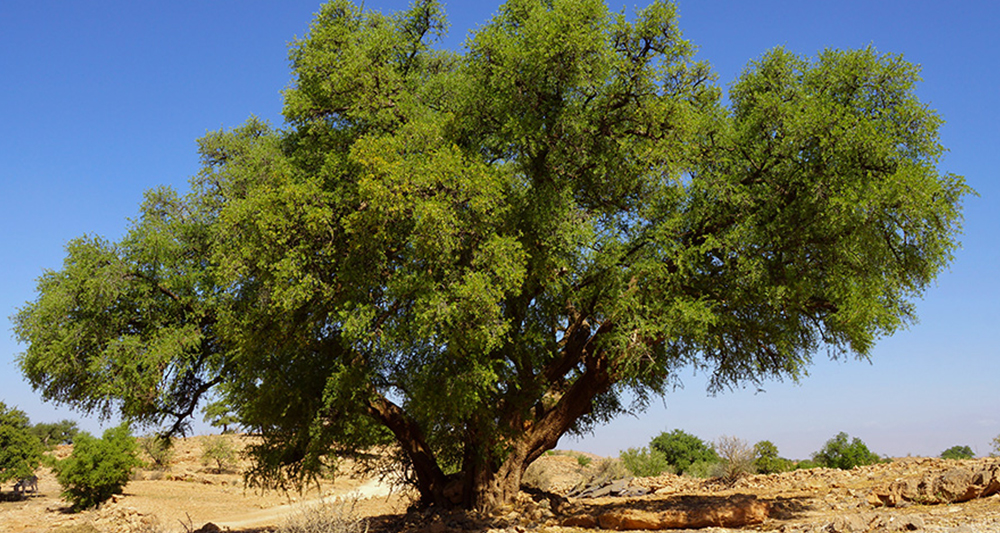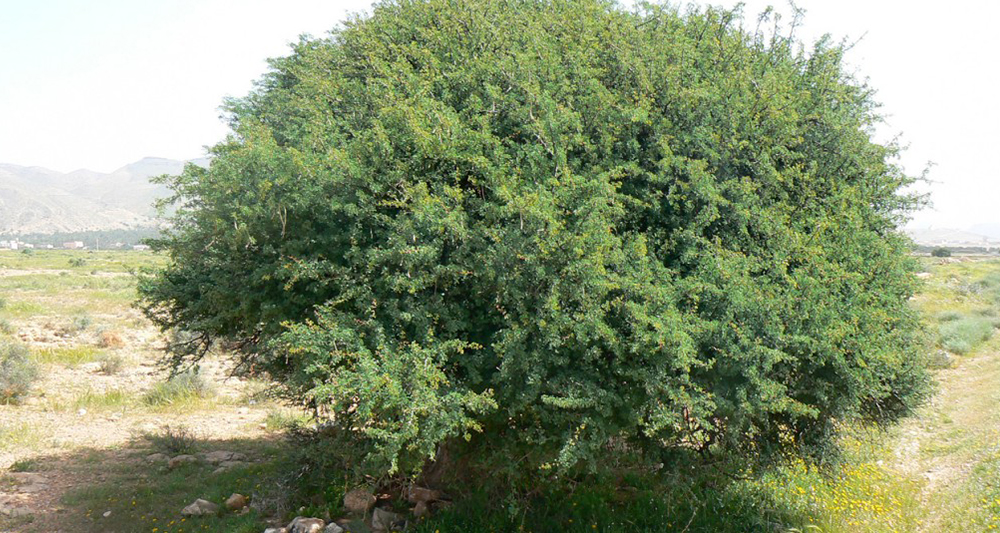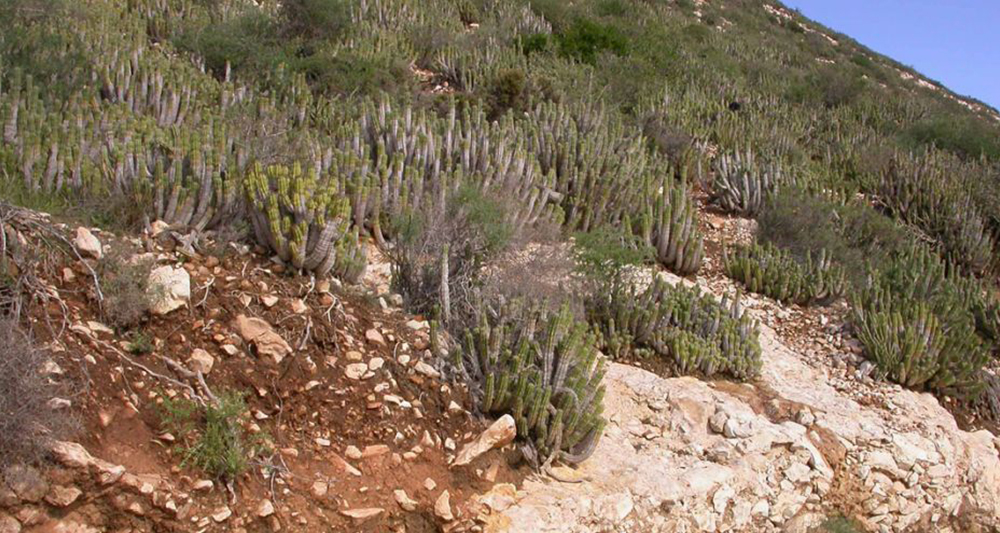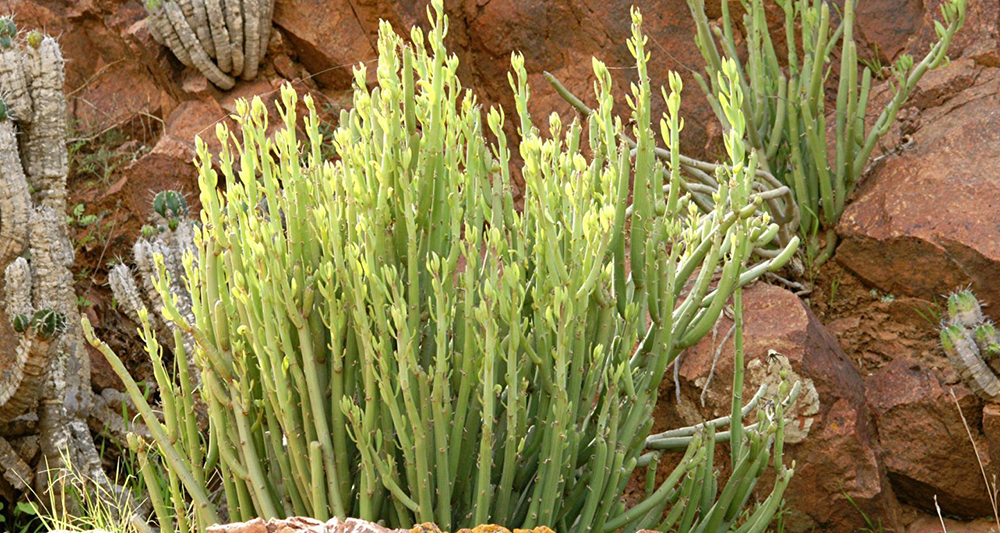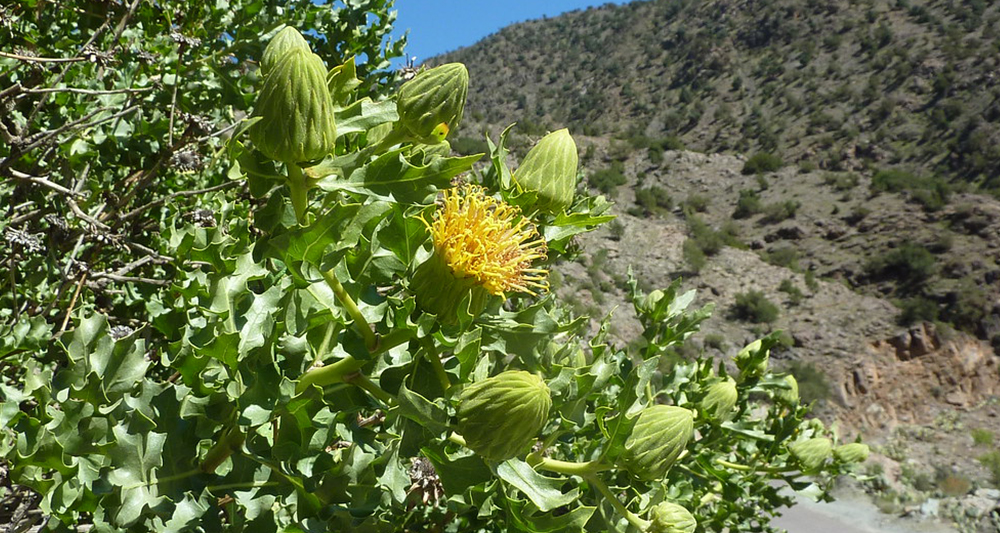The botanical trails are dotted with educational devices allowing you to learn about flora and fauna while walking through various monuments or listed buildings, from the Kasbah to the cisterns, passing through the tombs and the sharij (basin) of the Kasbah, as much heritage beacons now highlighted and replaced in an ecological and historical context.
Together, they constitute the natural park covering a medieval port which has now become a regional metropolis.
Nearly 29 perennial species have been identified, many of which are endemic: Argania spinosa (Sapotaceae), Acacia gummifera (Mimosaceae), Euphorbia beaumierana (Euphoribaceae), Senecio anteuphrbium (Chenopodiaceae), Warionia saharae (Solonaceae).

